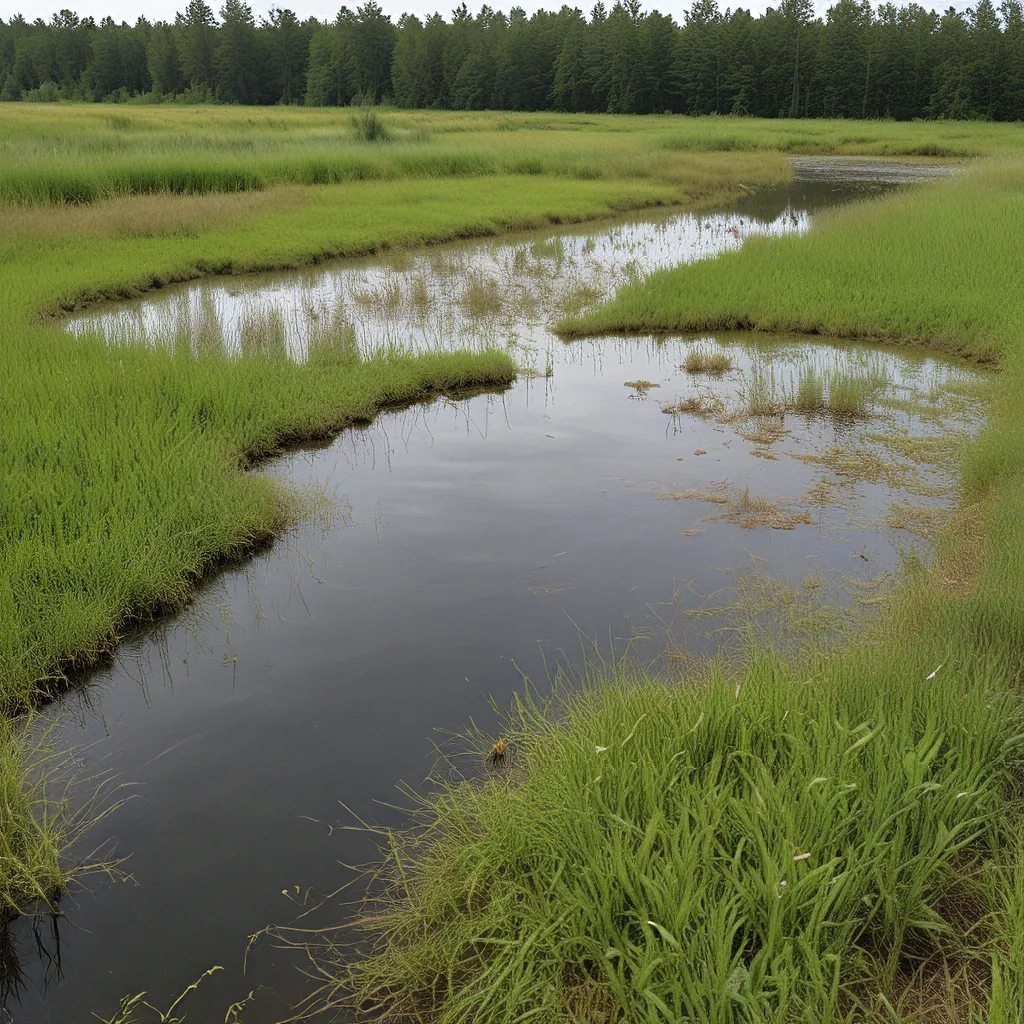
As an avid nature enthusiast, I’ve always been fascinated by the incredible resilience and adaptability of natural ecosystems. And when it comes to the world of wastewater treatment, I’ve discovered a hidden gem that truly embodies the harmonious coexistence of human engineering and the great outdoors – constructed wetlands.
These engineered marvels are gaining increasing recognition as a sustainable and cost-effective solution for managing wastewater, and I can’t wait to share with you the remarkable ways they’re redefining the landscape of environmental stewardship.
The Beauty and Brilliance of Constructed Wetlands
Imagine a lush, thriving landscape teeming with vibrant vegetation and bustling with the sounds of nature – birds chirping, insects buzzing, and the gentle flow of water. This isn’t just some idyllic dream, but the reality of a well-designed constructed wetland.
These carefully engineered ecosystems are not only visually stunning, but they also possess an incredible ability to filter out a wide range of pollutants from various sources, including wastewater treatment facilities, agricultural sites, and even landfills. And the best part? They do all of this with minimal maintenance required.
Research has shown that constructed wetlands can be highly effective in removing up to 90% of suspended solids, 80% of organic matter, and 50% of nutrients from wastewater. This is achieved through a complex interplay of physical, chemical, and biological processes that occur within the wetland environment.
But the benefits of these remarkable systems don’t stop there. They also excel at managing stormwater runoff and shielding downstream water resources from the adverse effects of flooding. In fact, these specific applications are often referred to as “stormwater wetlands,” and they’ve become an increasingly valuable asset for communities seeking to mitigate the impacts of urban development and agricultural activities.
Seamless Integration with the Landscape
One of the things that truly sets constructed wetlands apart is their ability to seamlessly integrate with the surrounding landscape. Unlike traditional wastewater treatment facilities, which can often feel like an intrusive and disruptive presence, these engineered ecosystems are designed to blend harmoniously with the natural environment.
At McClure, our team of experts is dedicated to ensuring that our landscape architecture projects not only adhere to the highest standards of design, but also prioritize the safeguarding of surrounding habitats. By either strategically relocating existing wetlands or constructing new ones, we can ensure that our projects enhance the local ecosystem, rather than disrupting it.
This holistic approach has led to some truly remarkable achievements, like the FHL Bank Headquarters project, where we seamlessly integrated bioswales, native landscaping, and a number of bioretention cells across the campus to effectively manage stormwater runoff. As a testament to our efforts, this project even achieved a prestigious LEED Gold certification, demonstrating the potential for innovative design and sustainable environmental stewardship.
Unlocking the Potential of Constructed Wetlands
But the true power of constructed wetlands lies not just in their ability to filter and manage water, but in their potential to transform the very fabric of our communities.
Imagine a world where wastewater treatment facilities are no longer seen as necessary evils, but as vibrant, naturalistic spaces that provide educational and recreational opportunities for visitors. That’s the vision that drives us at Alpha Wastewater, and it’s a vision that’s becoming increasingly attainable through the strategic integration of constructed wetlands.
By carefully positioning these engineered ecosystems within our projects, we can create oases of biodiversity that attract a wide range of native flora and fauna, restoring crucial connections between often-fragmented habitats. And as more and more people experience the beauty and tranquility of these wetland environments, I can’t help but believe that a deeper appreciation for the natural world will start to take root.
Diving Deeper into the Science
Of course, the implementation of constructed wetlands is not without its complexities. Environmental impact assessments, for example, play a crucial role in ensuring that these projects are designed and executed with the utmost care and attention to detail.
Rigorous analysis and planning are essential to minimizing potential disruptions to existing wetlands and ensuring that any necessary relocations or new constructions are done in a way that preserves the integrity of these delicate ecosystems.
And as researchers continue to unravel the intricate workings of constructed wetlands, we’re likely to see even more innovative applications and refinements to the technology. Some experts believe that we may one day harness the power of these systems to tackle emerging contaminants, like pharmaceutical residues and microplastics, that pose growing threats to our waterways.
A Future Rooted in Harmony
As I reflect on the incredible potential of constructed wetlands, I can’t help but feel a sense of optimism and wonder. These engineered marvels represent a powerful intersection of human ingenuity and the restorative power of nature – a testament to our ability to coexist in harmony with the world around us.
And while the journey ahead may be filled with ongoing research, debate, and the occasional challenge, I’m confident that the future of wastewater treatment lies in the hands of innovative thinkers and environmental champions who are willing to think outside the box and embrace the transformative power of constructed wetlands.
So, if you’re like me and you’re passionate about sustainable solutions that prioritize the health of our planet, I encourage you to explore the world of constructed wetlands and discover the endless possibilities that lie waiting, just beneath the surface.